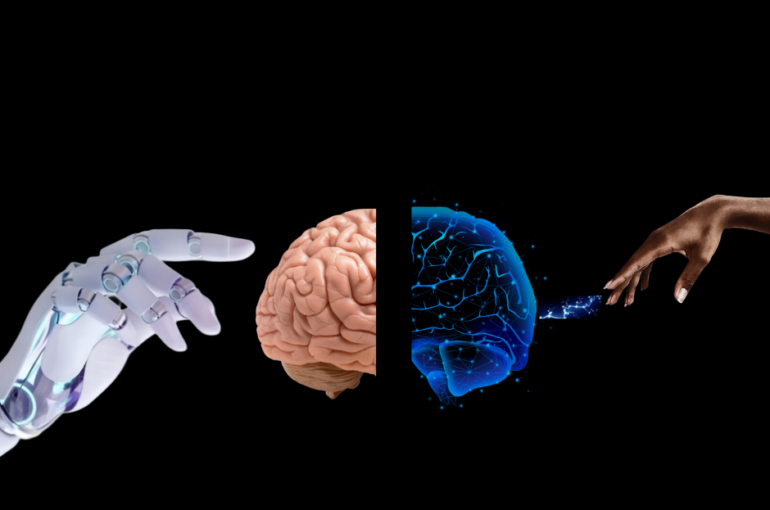Ink Meets AI: Redefining the Journalist’s Quill
Large language models (LLMs) like ChatGPT have significantly impacted the journalism industry, not over years but months. While these AI-driven tools have the potential to revolutionize content creation, they also raise important questions about creativity, ethics, and the role of human journalists in an increasingly automated world.
One way LLMs have influenced journalism is by enhancing creativity. With their ability to generate human-like text, they can assist journalists in drafting articles more quickly and efficiently. They can also provide new angles or perspectives on stories, helping writers to explore novel ideas or approach topics from unconventional viewpoints. For instance, AI-generated content can be used to create data-driven stories or analyze patterns in large datasets, revealing insights that might have been missed by human journalists alone.
However, the use of LLMs in journalism is not without its drawbacks. One major concern is the potential for AI-generated content to perpetuate bias and misinformation. As these models learn from existing data, they may inadvertently replicate harmful stereotypes or promote false narratives. Additionally, the increasing reliance on AI-driven tools may lead to the loss of the human touch in storytelling, as nuances, emotions, and personal experiences may be overlooked in favour of machine-generated content.
To address these ethical concerns, journalists and writers must work collaboratively with AI tools, striking a balance between human expertise and machine efficiency. By leveraging the strengths of both, they can create content that is both compelling and ethically sound. For instance, human journalists can use AI-generated drafts as a starting point, and then refine and fact-check the content to ensure its accuracy and authenticity.
Understanding the perspectives of the target audience is crucial when considering the impact of AI on journalism. Journalists, writers, authors, tech enthusiasts, and Gen Z and Millennial readers have different stakes in this transformation. While some may appreciate the efficiency and innovation that AI brings to journalism, others may worry about job displacement or the loss of human authenticity in news reporting.
Looking towards the future, it is essential for journalists to adapt to the evolving landscape of AI-driven journalism while maintaining their relevance and upholding the integrity of their profession. This may involve developing new skill sets, such as learning how to work with AI tools effectively and fostering a critical mindset to assess the ethical implications of using LLMs in their work. By striking a balance between embracing technological advancements and preserving the core values of journalism, the industry can continue to thrive in the age of AI.
Now let me tell you a Story about a Collaboration decade in the making, a Journalist and a Large Language Model teaming up.
Once upon a time, in a bustling newsroom, a seasoned journalist named Emily was assigned to cover a high-stakes political summit between two rival nations. Time was of the essence, and her editor expected a comprehensive, well-researched, and thought-provoking piece within 24 hours. With the clock ticking and the pressure mounting, Emily turned to her trusted AI assistant, JournalistGPT, to help her craft the perfect story.
In the early hours of the morning, Emily skimmed through countless articles, reports, and speeches, gathering valuable information about the political leaders, their histories, and the contentious issues at stake. As she uncovered new details, she fed them into JournalistGPT, instructing the AI to generate an outline of the story, summarizing the key points and suggesting potential angles.
As the sun rose, Emily reviewed the JournalistGPT’s output and was pleasantly surprised by the coherent and well-structured outline. The AI had even suggested an unexpected angle: exploring the role of grassroots movements in shaping the diplomatic landscape between the two nations. Intrigued by this fresh perspective, Emily decided to delve deeper, contacting sources on the ground to gather firsthand accounts of the activists’ efforts.
Throughout the day, Emily used JournalistGPT to generate interview questions for her sources, cross-reference historical events, and even draft engaging quotes from the political leaders. By leveraging the AI’s analytical capabilities, she was able to identify patterns and trends that highlighted the significance of grassroots diplomacy.
As she pieced together her story, Emily maintained a strong ethical compass, ensuring that she fact-checked every AI-generated snippet of information and kept the narrative balanced and unbiased. The JournalistGPT’s creative suggestions inspired her writing, but she never lost sight of her journalistic integrity, adding her unique voice and human touch to the narrative.
With the deadline looming, Emily reviewed her work one last time, satisfied that she had crafted an insightful, accurate, and engaging piece. She had successfully utilized JournalistGPT to complement her own skills, resulting in a story that was not only informative but also thought-provoking and emotionally resonant.
As Emily’s article went live, readers from diverse backgrounds were captivated by her fresh perspective on the political summit. Journalists, writers, and tech enthusiasts alike marvelled at the seamless blend of human expertise and AI-generated content, while younger generations found themselves enthralled by the grassroots narrative that highlighted the power of everyday people to effect change.
In the end, Emily’s collaboration with JournalistGPT showcased the potential of AI to enrich journalism when used responsibly and ethically. By embracing the strengths of both humans and machines, Emily demonstrated that it is possible to navigate the AI revolution in journalism without sacrificing creativity, ethics, or the human touch.
Other articles
-

Is Artificial Intelligence the same as Machine Learning?
In the rapidly evolving world of technology, terms like Artificial Intelligence (AI) and Machine Learning (ML) are often used interchangeably. However, while they are closely related, they are not the same thing. In this blog post, we’ll dive into the intricacies of AI and ML, unravel their differences, and explore how they are shaping our […]
Enroll -

How AI is Transforming Hurricane Preparedness in the Caribbean
When the winds start to rise and the sea begins to turn, most people think of nature as the ultimate force. Yet the real force shaping our ability to survive hurricanes today is intelligence, artificial intelligence. AI is helping us understand, prepare for, and recover from storms in ways that were unimaginable a decade ago. […]
Enroll -

Who Are the Big Four in Artificial Intelligence and What Caribbean Businesses Can Learn from Them
The Big Four of Artificial Intelligence: Lessons for Caribbean Business Leaders Explore how the world’s leading AI companies, OpenAI, Google DeepMind, Anthropic, and Meta, are shaping the global intelligence economy and what Caribbean organizations can learn from their strategies. Introduction: Learning from the Giants Artificial Intelligence is the new frontier of global competition. Behind its […]
Enroll -

The Future of Artificial Intelligence in the Caribbean Economy
The Future of AI in the Caribbean Economy: Building Intelligence, Innovation, and Independence Discover how artificial intelligence can transform the Caribbean economy. Learn how applied AI can enhance productivity, regional innovation, and global competitiveness for Caribbean nations and businesses. Introduction: A Region on the Edge of Reinvention The Caribbean stands at a turning point. For […]
Enroll
